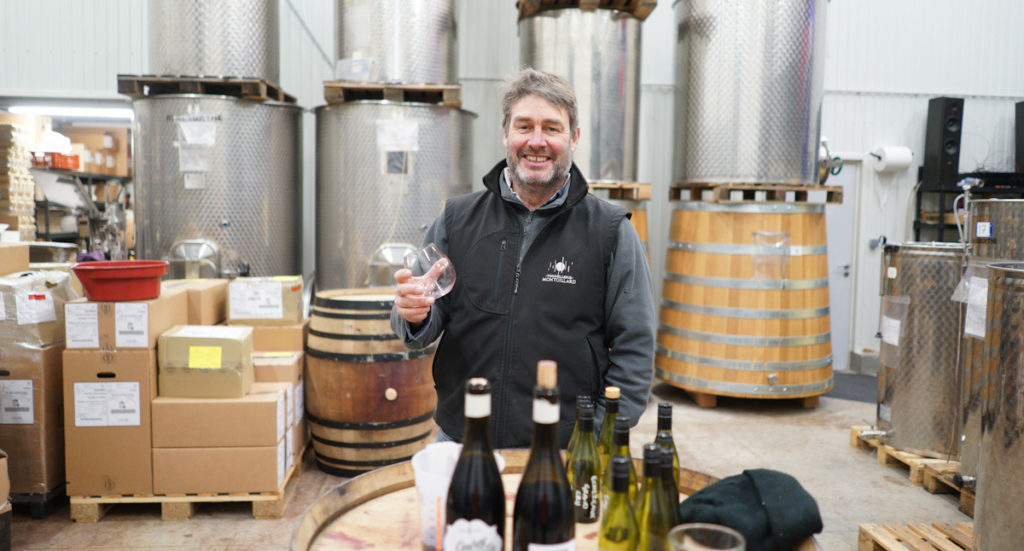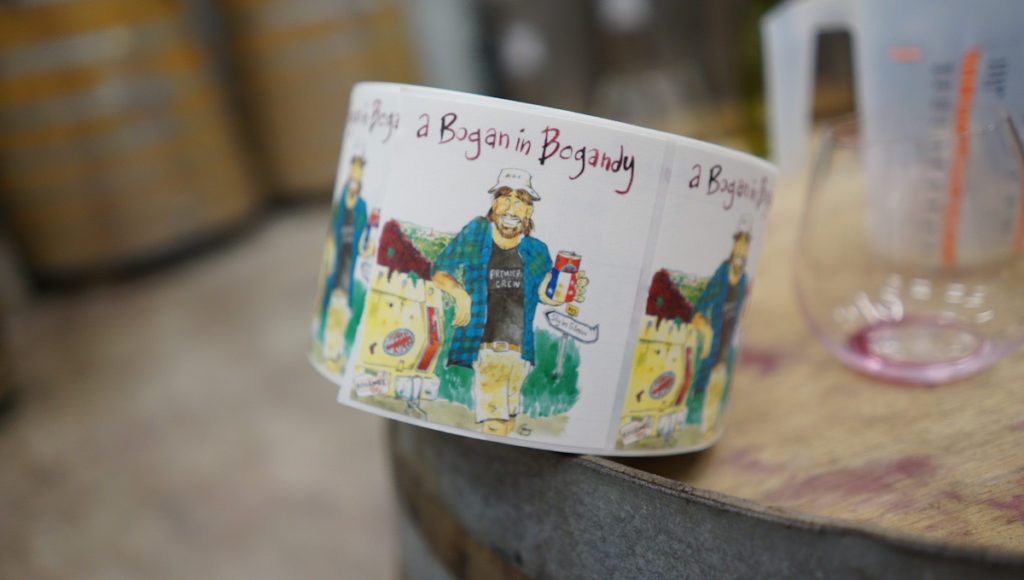One of the surprises in my first week of tastings was the visit to Mark Haisma in Gilly-les-Citeaux.
It comes as no surprise that Mark Haisma has a strong Australian influence – in the best sense of the term. He is informal and appears very straightforward, although one should not mistake this for hasty or superficial. There are depth and complexity in both the wines and the business approach.

Let’s face it: I am in general not a big fan of Australian wines. It’s my own shortcoming, I admit – perhaps lapses in my upbringing. I have therefore been a bit reluctant to visit Mark Haisma, despite the fact that there is a Danish winemaker about whom I have written – Thomas Dam – making his own wines in the Gilly premises shared with Haisma.
This is embarrassing to admit, but it is what can happen when your interest in wine is driven by emotion and a search for wine that talks to the inner Hog.
To be direct, however, Mark Haisma’s wines talked to me. Not all of them of course, and perhaps they are not all works of art, but the best are quite a lot more “Burgundy” than many of the wines produced in villages nearby.
Let’s go to Gilly!
The 2019s reds from Mark Haisma
The qualities of Haisma’s reds left me a bit shaken, as I discovered some attributes in several of the wines that are rarely found: a deep, mineral expression, and a beautiful integration of the terroirs. The wines are made with a gentle hand, leaving ample space to express both fruit and terroir. They are vins d’émotion, easy-going and effortless, showing detail almost naturally.
The Morey-Saint-Denis Les Chaffots took me back to the same vineyard and Domaine Hubert Lignier, which in 1993 made a stunning, mineral expression of the terroir. Haisma is doing extremely well with great, yet somewhat overlooked, terroirs – or even unknown terrors like the Brochon/Gevrey vineyard Gueulepines.
It was indeed an exciting journey through the red terroirs.
I was left, however, a bit perplexed about Haisma’s whites; enjoyable, yes, but I need to better comprehend and internalise the line-up before I can write something intelligent (yes, it happens from time to time, or so I’ve heard!).

To the notes!
Mark Haisma “A Bogan in Bogandy” Passetoutgrain 2019
The 2019 “A Bogan In Bogandy” Passetoutgrain is a vin de soif at an affordable price point, and with a label to match (see above). It is rich, energetic, and drinks by the litre – or so I am told. Good, pure-fruit flavours – raspberries and boysenberries -and even some blueberries. There’s a slight reduction, but it’s not too bad. This is a good introduction to the Haisma range, although the wines below deliver much more.
(Drink from 2021) – Good – Tasted 10/02/2021
Mark Haisma Bourgogne Pinot Noir 2019
The 2019 Bourgogne Pinot Noir has a fine, organic feel. While it is on the generous and ripe side of the vintage, it’s purely flavoured, with raspberries, hints of cherries, even some strawberries. Quite delicate, and with beautiful, deep fruit for the level.
(Drink from 2021) – Good+ – Tasted 10/02/2021 –
Mark Haisma Gevrey-Chambertin 2019
The 2019 Gevrey-Chambertin Village (from mixed plots) is upping the game, with its 50% whole-cluster inclusion and tempered extraction. The stems are very well integrated, leaving behind only a hint of cinnamon. There are cherries and notes of boysenberries; a vivid, gourmand wine, although not particularly precise terroir-wise. Nonetheless, quite an enjoyable Gevrey.
(Drink from 2026) – Very Good (87-88p) – Tasted 10/02/2021 –
You need to login as a Premium subscriber to read the rest of this article. If you are not a Premium Subscriber, use the subscribe function and sign-up.

 - A true vin d’émotion – a Burgundy of passion
- A true vin d’émotion – a Burgundy of passion - A truly hedonistic wine – lively and enjoyable
- A truly hedonistic wine – lively and enjoyable - A vivacious wine for pure indulgance
- A vivacious wine for pure indulgance - A Vin Vif - fresh, energetic and with a light appearance
- A Vin Vif - fresh, energetic and with a light appearance
Leave a Reply
You must be logged in to post a comment.